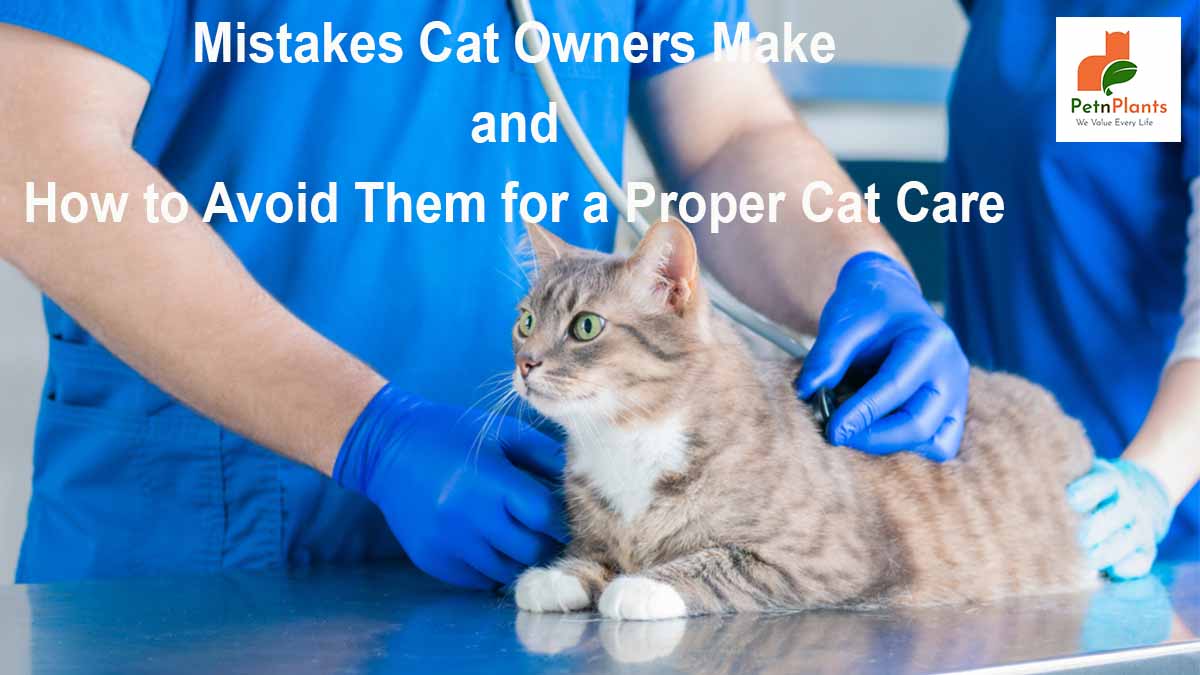How To
Latest
Pet Care
How to Groom Your Dog at Home with the Right Dog Grooming KitMarch 19, 2025
We Value Every Life

Buying a cat for a pet is a significant decision. Cats are independent compared to their canine counterparts, yet they also require care, time, and money. So even before one heads to a pet store to bring home their pet kitten, it is essential that they, as potential cat owners know how to avoid common mistakes cat owners make when it comes to cat care.
Here are some of the common mistakes people make and tips on how to take care of a cat.
Buying a cat on the spur of the moment can be tricky, for, unlike other stuff, they cannot be returned if it does not suit the buyer just because it does not function well. It is essential to do homework like finding out about the cat one wants to own- their habits, temperaments, health, their breed, how they would fit into one’s lifestyle, and whether the home environment is suitable for the cat.
So now that one has bought a cat as a pet, one should understand that cats need medical care just like their canine counterparts. Cat owners think it is unnecessary to regularly visit veterinaries simply because they do not understand that cats fall sick. One reason is that cats are good at hiding their illness, and initial symptoms may be difficult to notice. Older cats that show signs of disease are often mistaken for owners’ signs of old age. A veterinarian is trained to look out for such symptoms in pets. Early interventions can help avoid diseases and prolong the lifespan.
Taking the cat to the veterinarian is another reason for negligence.
One common assumption among cat owners is that they think indoor cats are safe from getting fleas or other parasites, and this is a mistake on their part.
Prevention is necessary as fleas can make their way quickly inside homes, hitchhiking on the clothes of the cat owners or when the cat goes outdoors for a walk. Fleas can also enter through doors and screens. There are other problems with how to care format and protect them from intestine parasites like roundworms and tapeworms. Cat owners should ensure having a parasite prevention program that is appropriate for their cats.
One of the common health issues diagnosed by veterinarians in cats is obesity. It is estimated that most pet cats are obese or overweight and the common cause is overfeeding. Weight issues can lead to shortened lifespan in a cat, and feeding the wrong type of food can lead to parasites and bacterial infection risks.
A cat needs a well-balanced diet to remain lean and healthy. Cat owners must ensure that they feed them decent food brands specifically made for cats. Foods that need to be avoided are tinned tuna, a vegetarian diet, and dog food! Cats like meat, and they need protein; it is essential not to give them raw stuff but rather home-cooked ones.
Occasional hairballs are normal, but if the cat has frequent vomiting – with or without hairballs, gagging, and coughing, it is not normal and indicates sickness. Cats with these symptoms may suffer from gastrointestinal disease, skin disease, or any other type of disease.
Cat owners may not know that dental disease is common in most cats above three years of age. The oral health of the cat must not be overlooked.
Brushing a cat’s teeth may be cumbersome for humans, and it requires plenty of patience and conditioning of the cat to treat the brushing activity. If brushing a cat’s teeth is impossible, taking the help of a veterinarian or suggesting some other pain-free measures to keep the cat’s mouth healthy is advisable.
Many cat owners think that declawing a cat is okay, but the reality is that they have no idea what declawing a cat will mean. It is like removing the top joint of a human finger. Would you like that to happen to you? You need to understand what a cat likes. Just like removing a bone joint could decapacitate an individual; the same thing is with cats. Here, the declawing removes the claws and the bone that holds the claw.
Cat owners who do not neuter or spay their cats are responsible for many cats that end up in rescue centers and languish there. This irresponsibility towards an important cat care regime aggravates breeding problems and prevents many eligible cats from being adopted.
Pet owners of male or female cats may find that if their cat is not neutered or spayed, they risk possible aggression from male dogs or female cats breeding kittens that can be difficult to manage. If cat owners have unneutered male cats, they will be responsible if the male escapes out and makes many unsprayed female cats in the family way. Fixing the cat also prevents them from various illnesses such as infections and tumors.
People avoid buying pet insurance as they think it is expensive and one can manage without it. When a cat has an illness or requires an operation that can cost them a veterinarian bill of thousands of dollars, it is better to go for insurance that can cost a fraction of the enormous medical bills.
Cat health care & wellness has a recurring cost, and maintenance expense is not cheap. Adding medical bills on top of that can mortify cat owners.
All cat owners want to keep their pets happy and healthy. However, they tend to neglect certain vital aspects of cat care, such as proper diet, regular visits to vets, health care, and pet insurance. This lack of understanding on how to care for a cat is more out of ignorance than deliberate action on pet owners.
0